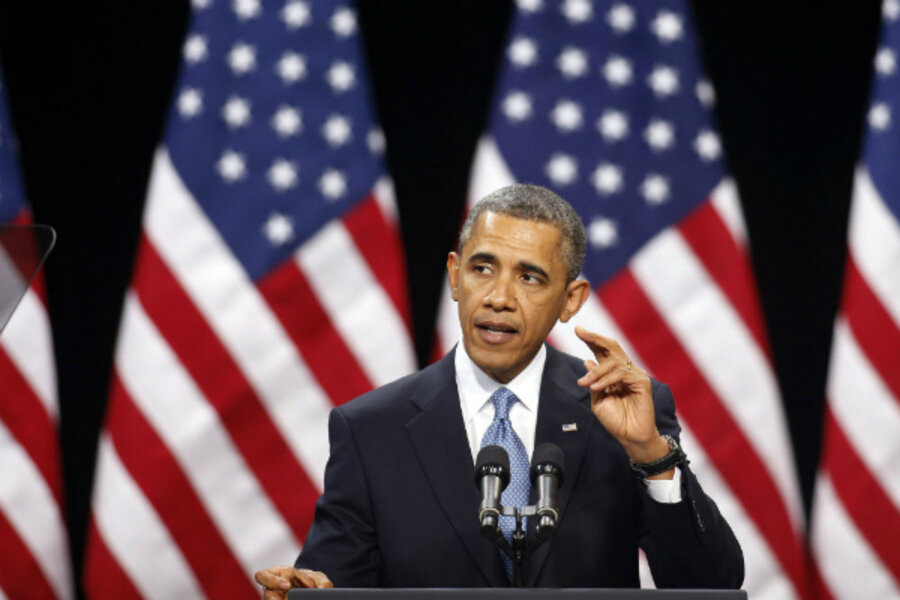Black voter turnout up, but Dems can't take 'Obama effect' for granted
Loading...
If you had any doubts, it’s now official: President Obama has blacks to thank for his reelection. It turns out that record levels of black voter turnout propelled Obama to victory in 2012. So much so that if blacks had voted at 2004 levels, we’d all be saluting a President Romney right now.
We think Obama has a few million thank you cards to sign.
That’s according to a new Associated Press-Brookings Institution analysis on 2012 election data that contains a few gems that both parties would be wise to examine.
Among the surprises: Latinos aren’t as lucrative, votes-wise, as they appear to be – yet. And Democrats, who appeared to have cemented their role in 2012 as the minority party, shouldn’t get too comfortable.
Here are four lessons the 2012 election post-mortem taught us about the minority vote:
Black voters can turn out
Voter ID laws. High unemployment among blacks. Low rates of registration. Lack of transportation and access to polling stations.
These were all supposed to keep blacks away from the polls last year, but they didn’t.
Not only did black voters turn out, their turnout levels surpassed that of whites and most minority groups, including Latinos and Asians, in last year’s elections.
Though we don’t have exact data on the 2012 election turnout breakdown just yet, 2008 turnout data represented the smallest gap on record between whites (66.1 percent turnout) and blacks (65.2 percent turnout). According to the AP-Brookings analysis, 2 million to 5 million fewer whites voted in 2012 than in 2008, erasing that narrow lead.
Latinos still lag
The same headlines that warned of plummeting black voter turnout in 2012 also trumpeted the so-called Latin sensation, which was supposed to see record levels of Latinos turn out at the polls.
They did, but not at the levels black voters turned out.
Consider this: While blacks make up about 13 percent of the population and 12 percent of the share of eligible voters, they represented 13 percent of the total 2012 votes cast, thereby “outperforming” their share.
By contrast, Latinos make up 17 percent of the population but just 11 percent of eligible voters and 10 percent of total 2012 votes cast, somewhat underperforming for their share.
In fact, Latinos probably won’t surpass the share of eligible black voters until 2024, according to the AP-Brookings analysis.
Why the lower Latino rates?
Latinos may be growing fast, but they’re still a fairly young cohort, with more than one-third of Latinos (almost 35 percent) younger than the voting age of 18.
What’s more, many Latinos are not yet US citizens and therefore ineligible to vote. Nearly two-thirds of legal Mexican immigrants are not US citizens, according to a Pew Center analysis – and that’s not even counting illegal and undocumented immigrants.
But their day is coming
A proposed immigration bill in the Senate could see nearly 11 million immigrants currently here illegally become eligible for US citizenship – and voting – in as little as 13 years (the bill proposes a 13-year path to citizenship).
If that bill, or some iteration of it, passes, the total share of Latino voters may leap to 16 percent of the electorate by 2026. Under that same scenario, the share of eligible white voters could shrink to less than 64 percent, as the growing minority population edges out white population shares, according to the AP-Brookings report.
“The 2008 election was the first year when the minority vote was important to electing a U.S. president. By 2024, their vote will be essential to victory," William Frey, a demographer at the Brookings Institution said in the report. “Democrats will be looking at a landslide going into 2028 if the new Hispanic voters continue to favor Democrats.”
But Democrats shouldn’t rest too easy
Whatever you heard about the GOP’s minority problem, the rainbow coalition is not a sure bet for Democrats in 2016 or for future elections.
In fact, 2012 may have been an exceptional year. That’s because Romney was an exceptionally poor candidate for motivating white voters, let alone minorities, to the polls. And Obama was an exceptionally strong candidate for motivating minorities. That’s a scenario Democrats may not be able to replicate again soon.
“The 2012 turnout … suggests … there is an 'Obama effect' where people were motivated to support Barack Obama,” Andra Gillespie, a political science professor at Emory University, told the AP. “But it also means that black turnout may not always be higher, if future races aren't as salient.”
Or, as GOP consultant Whit Ayres told the AP, “It remains to be seen how successful Democrats are if you don't have Barack Obama at the top of the ticket.”
What’s more, the GOP is well aware of its “minority problem” and working overtime to reverse it, starting with comprehensive immigration reform legislation that could make Latinos and Asians more receptive to the GOP in coming elections.





